Nepal, possibly Kathmandu Valley
14th – 15th century
°°° Price can be reasonably negotiated °°°
Rare representation in high relief of Vaishnavi, female deity representing the primordial creative energy (shakti) of the Hindu god Vishnu. She is shown seated, legs positioned in sattvaparyanka, in the center of a double circle made up of foliage in scrolls blossoming into large scrolls offering a seat to the divinity. Dressed in a simple dothi, she sports an opulent chest on which rests a large necklace. She wears a high ornate tiara, large pendant earrings resting on the shoulders. She is decked out with four arms, the upper hands brandishing a wheel (chakra), a mass (gada), classic attributes of Vishnu, the lower right hand holding a conch (shankha), the left hand in the abhayamudra position (absence of fear).
Vaishnavi is one of the seven mother goddesses (Saptamatrika) emerging as shaktis from the bodies of the gods, here Vishnu, the preserving god. The order of the seven mother goddesses usually begins with Brahmi symbolizing the very essence, creation. Vaishnavi, like Vishnu, provides the created world with symmetry, beauty and order. The most important meaning of Saptamatrika symbolism is the implication of cyclic universal time and its cessation. In classical statuary, Vaishnavi occupies the central position flanked by three goddesses on either side.
Solid wood with traces of polychromy
Usual wear and visible losses
21.8 x 16 cm excluding stand
Private collection


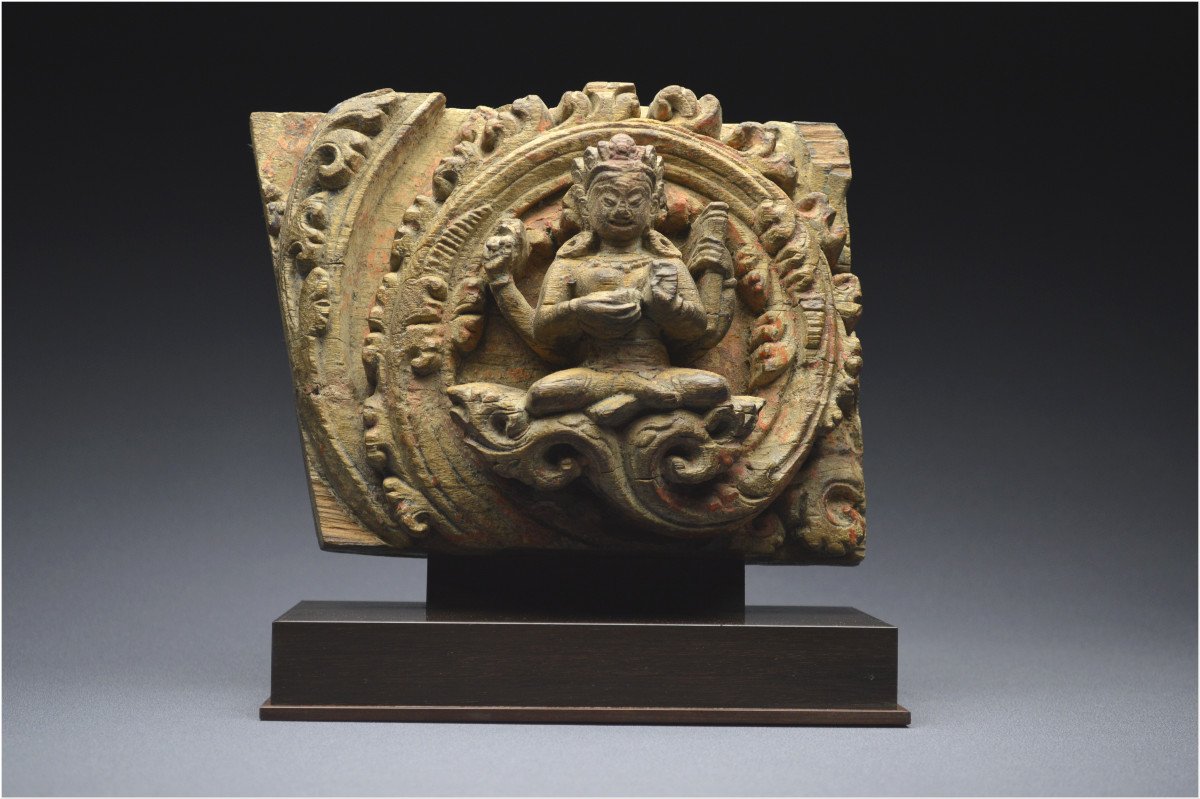
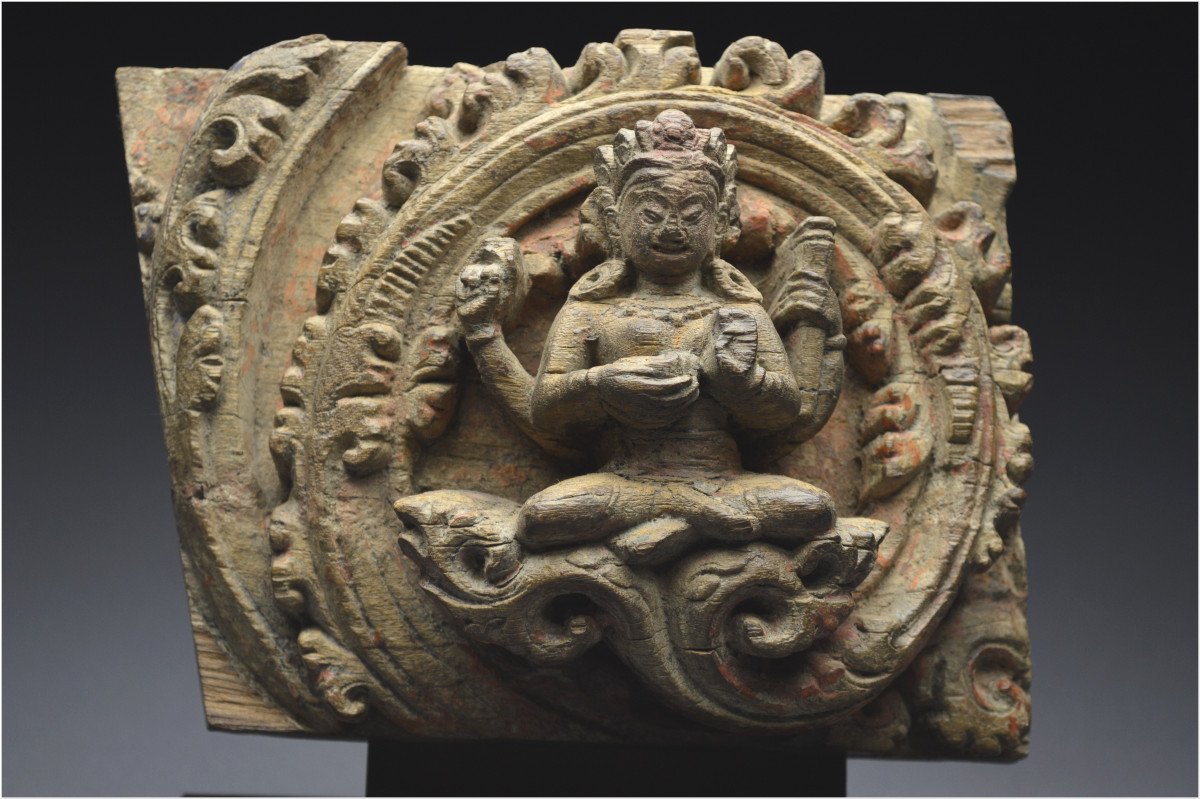
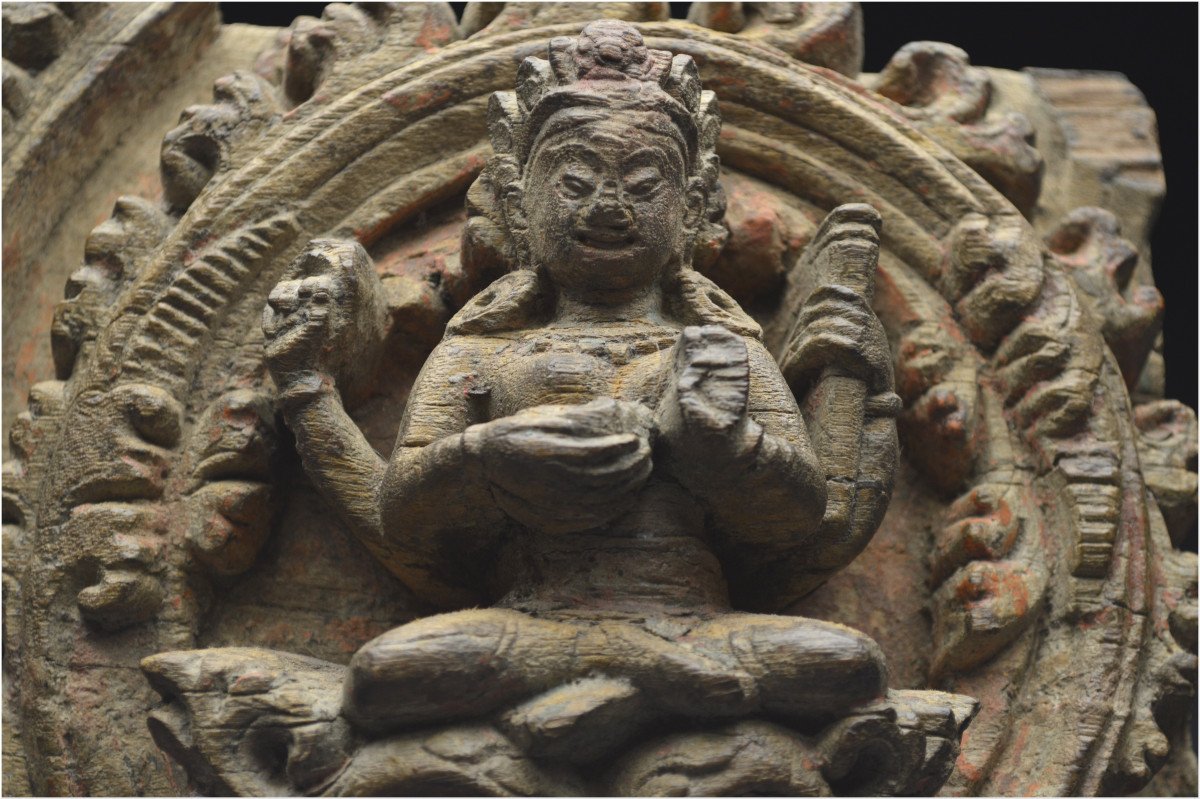
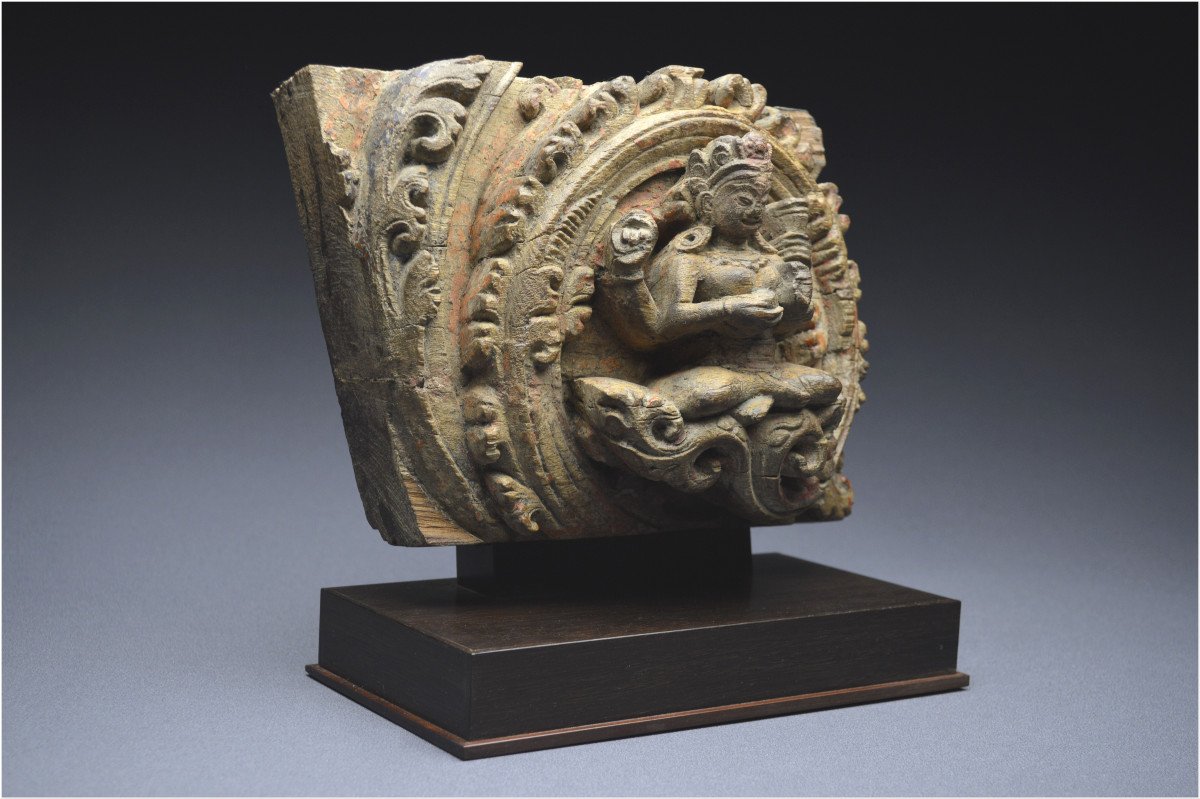
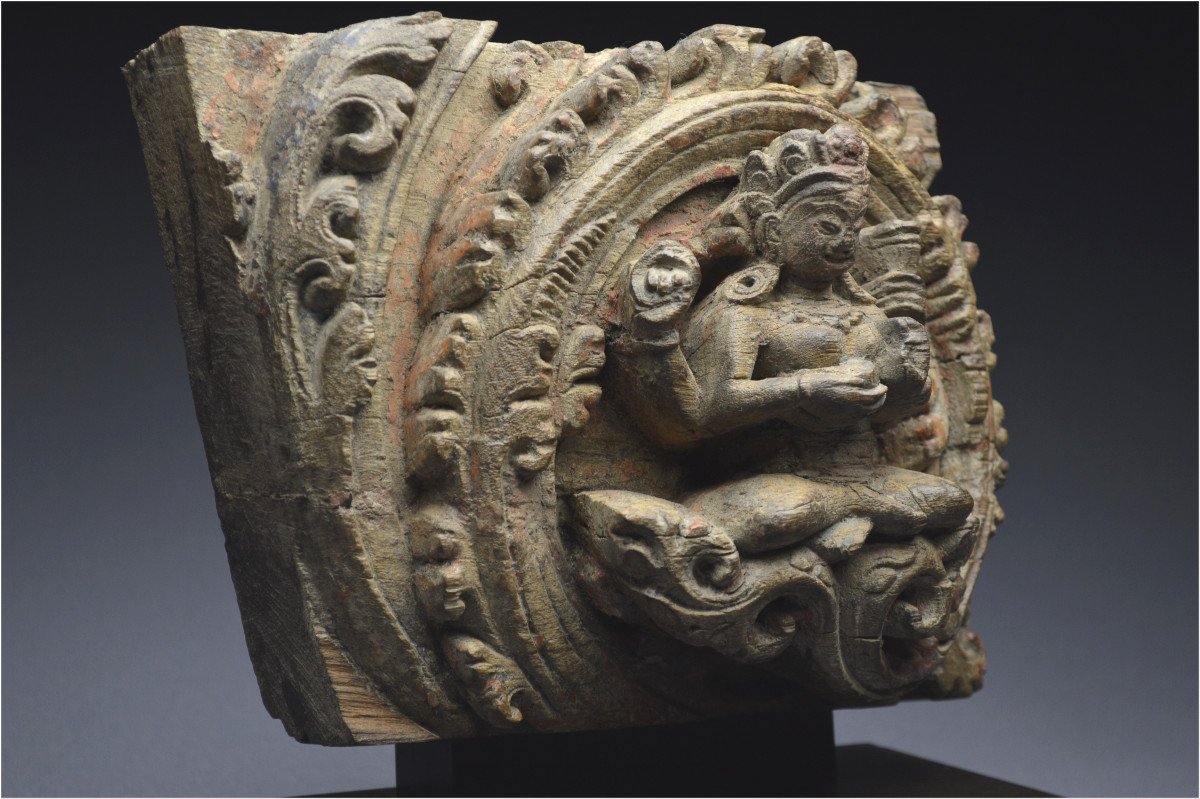
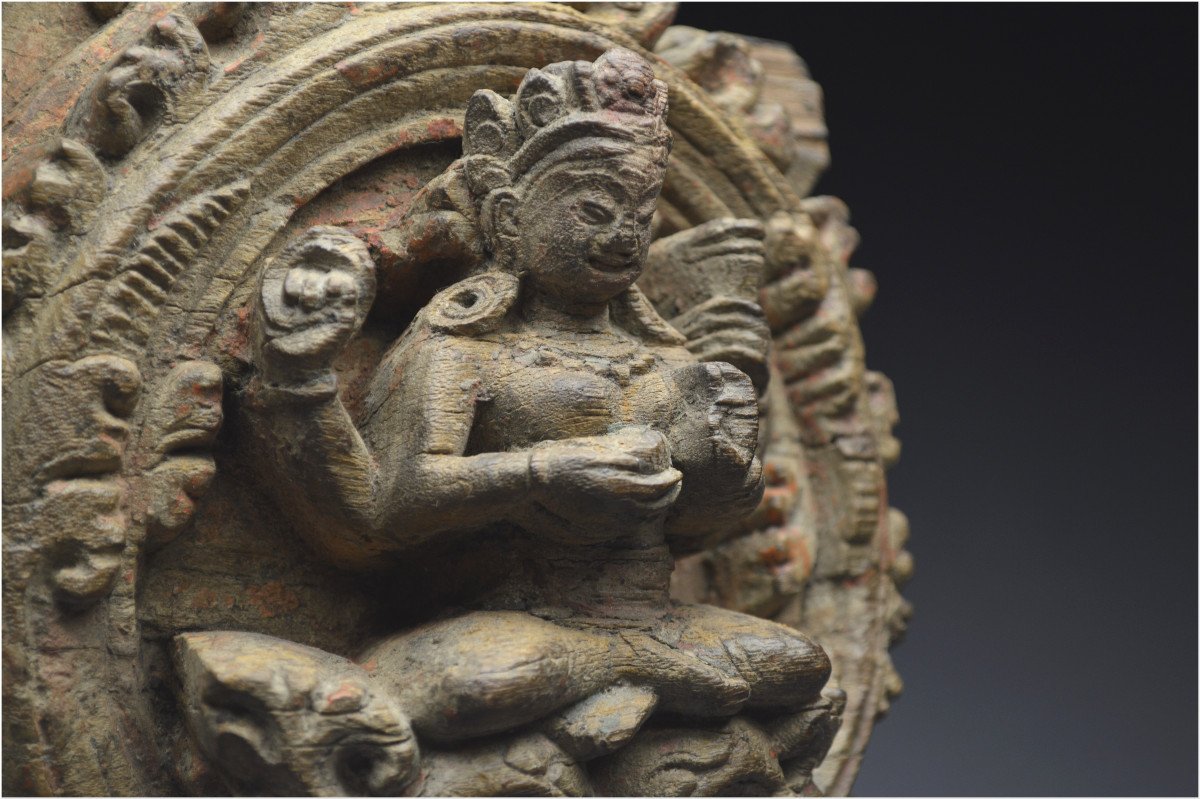
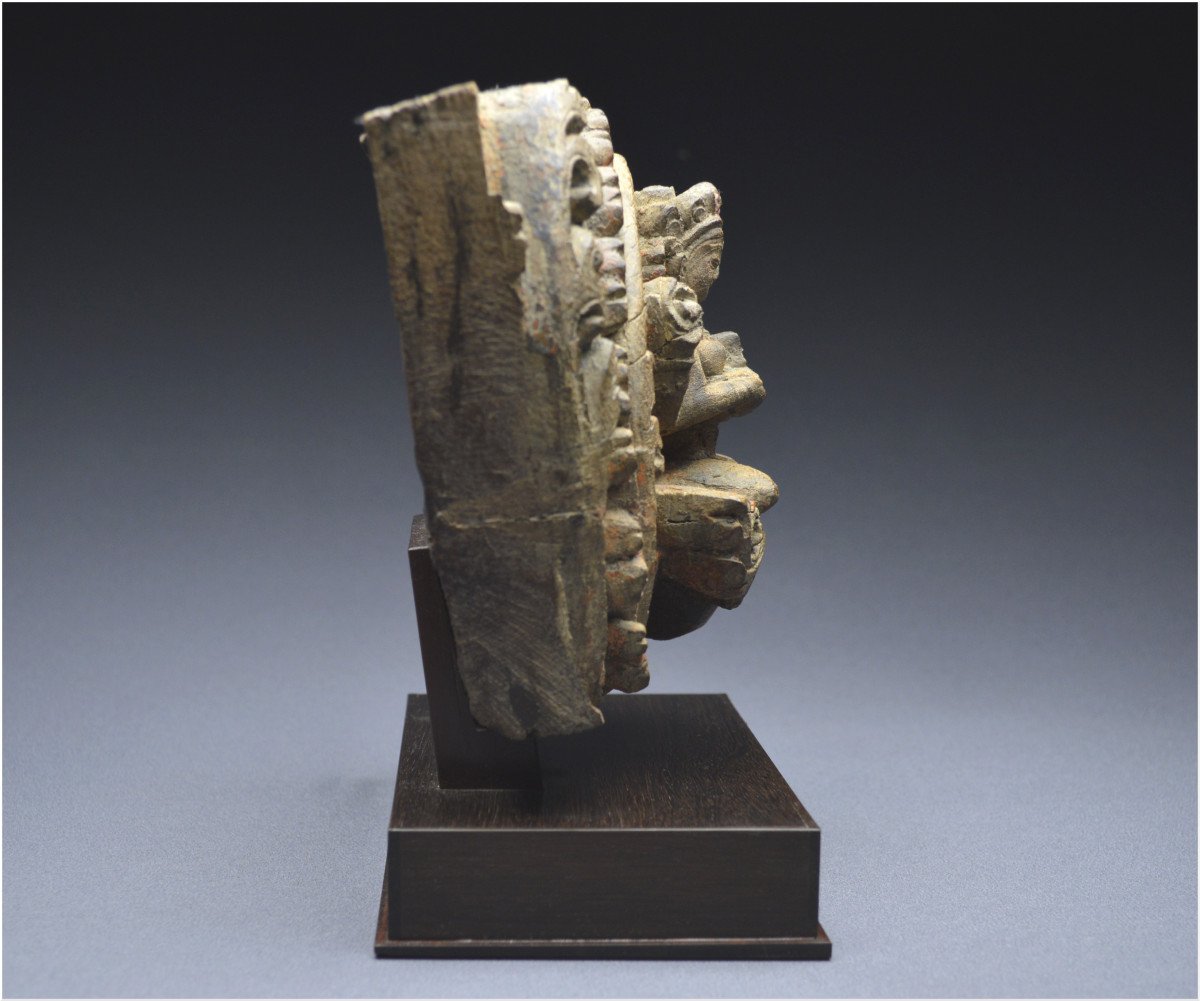
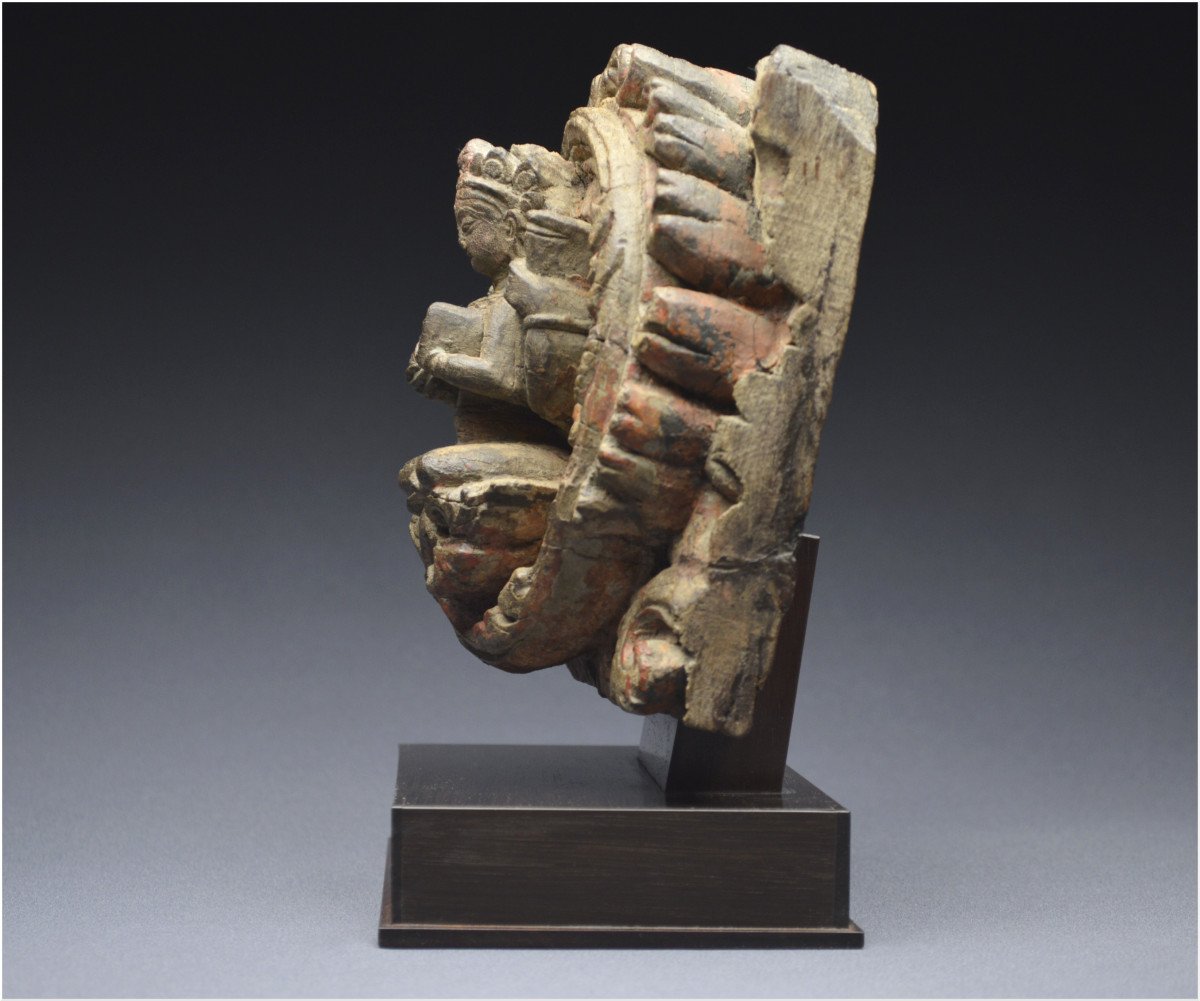
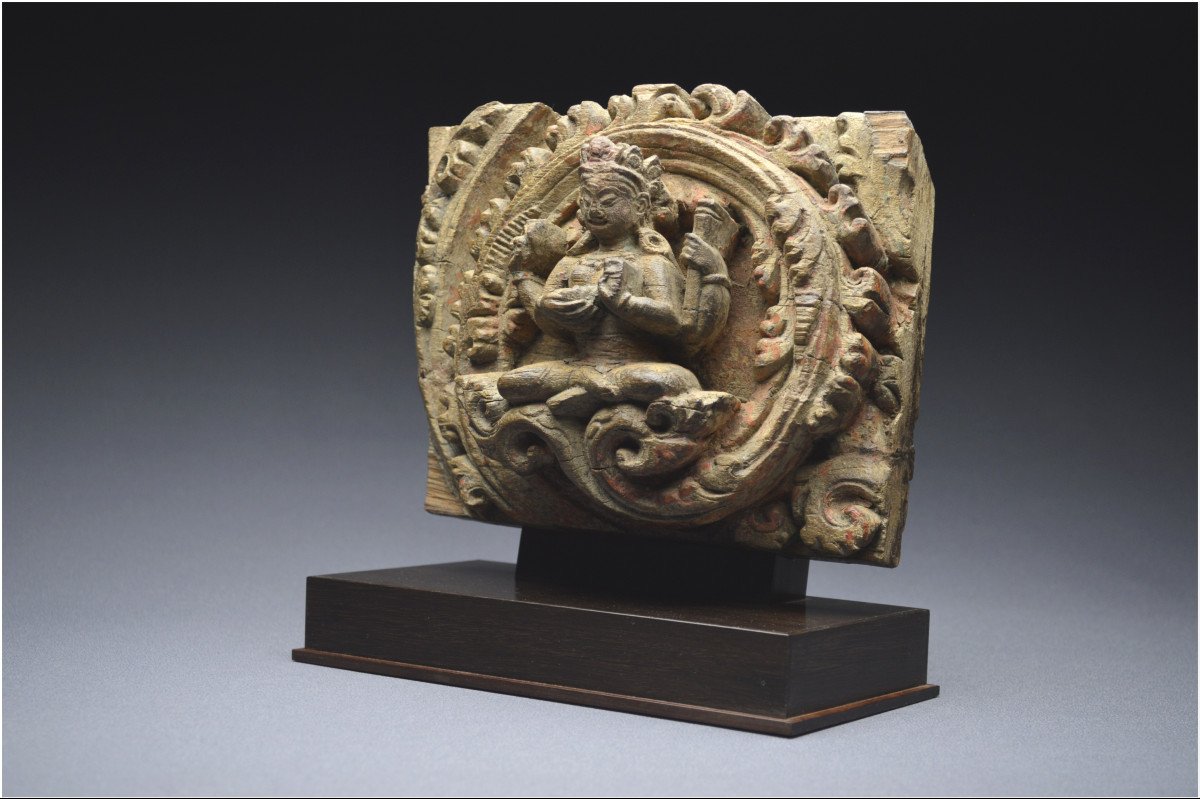
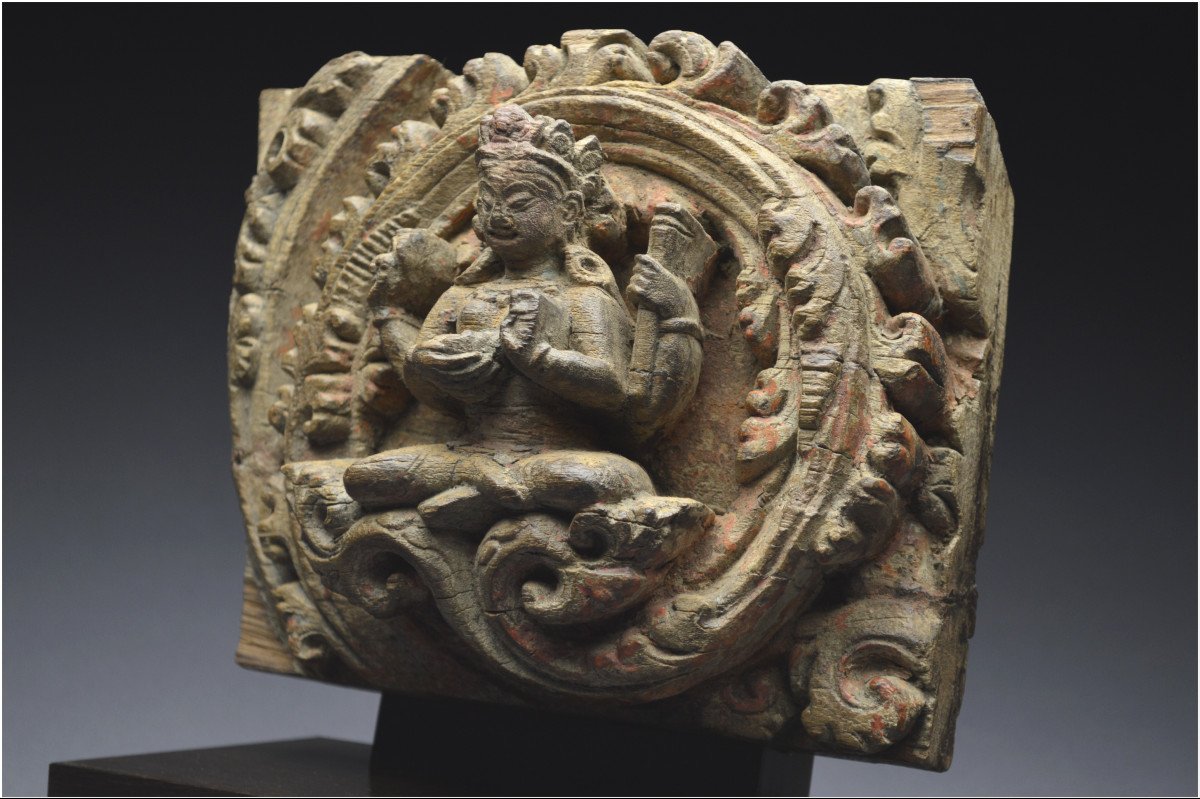
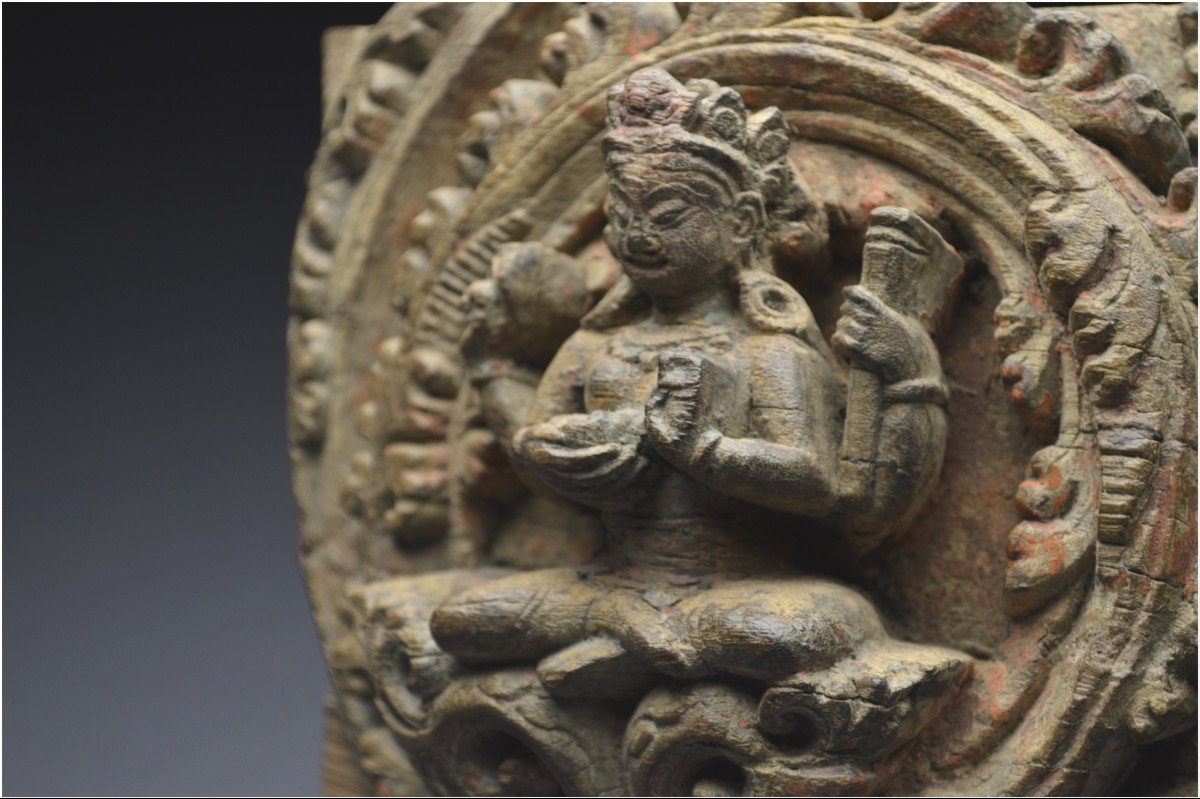
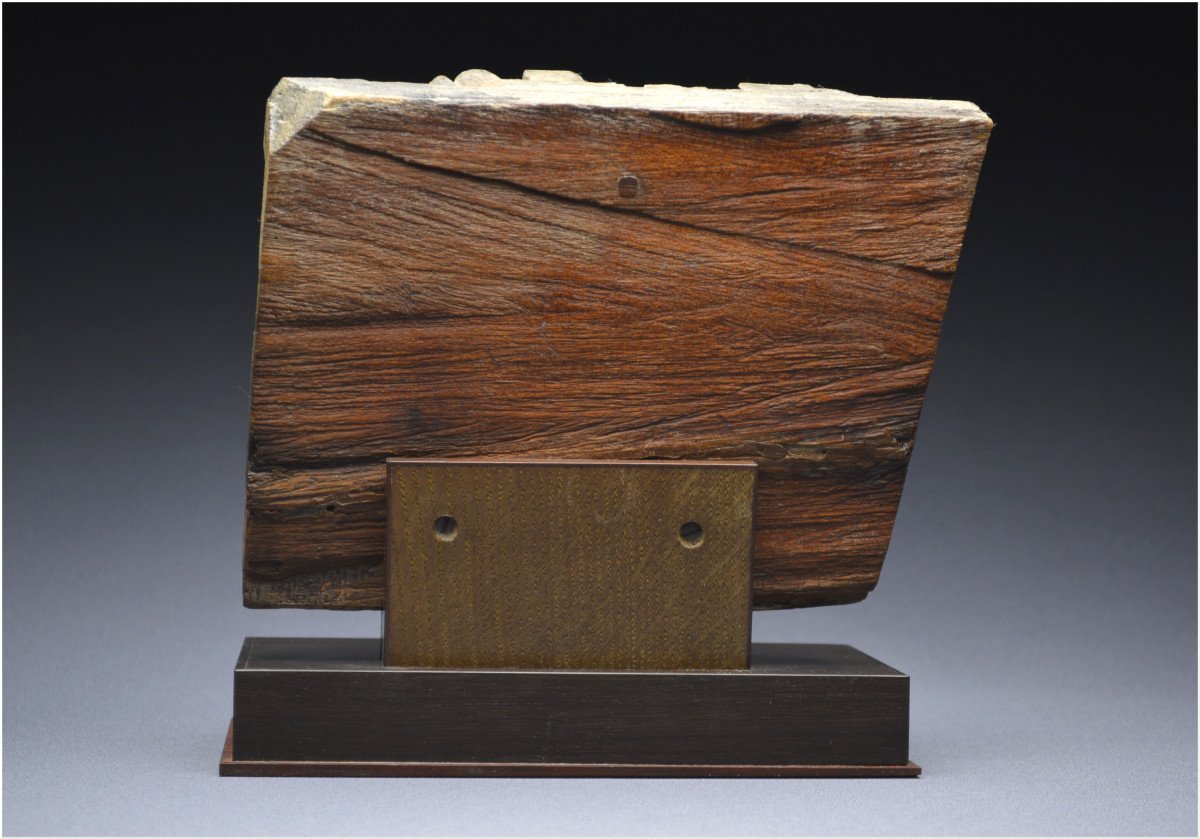













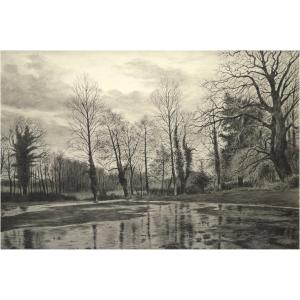
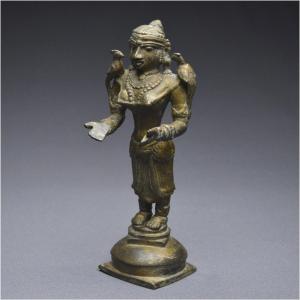


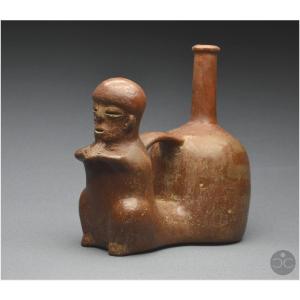
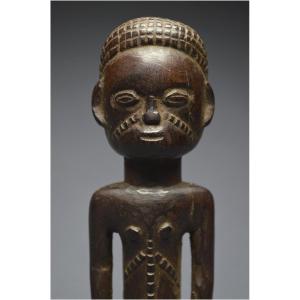
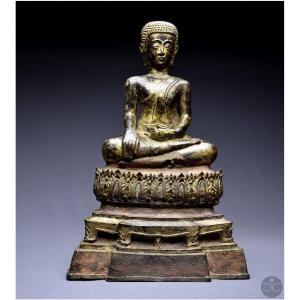


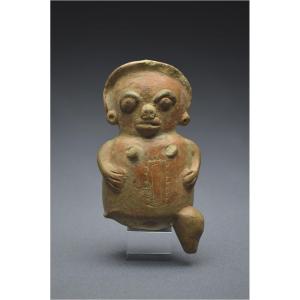

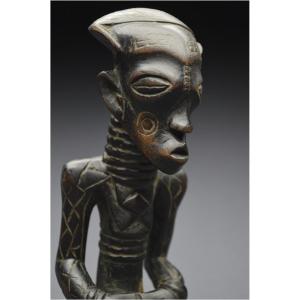


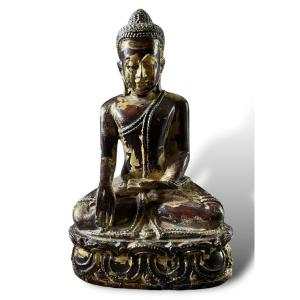
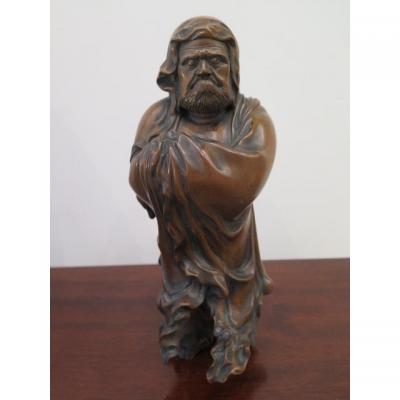






 Le Magazine de PROANTIC
Le Magazine de PROANTIC TRÉSORS Magazine
TRÉSORS Magazine Rivista Artiquariato
Rivista Artiquariato